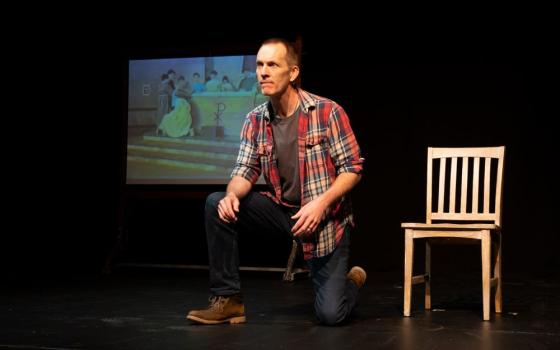Judging from the comments, some readers thought last week's column on the "Year for Priests" unduly pessimistic about the present state of the Catholic Church. To the contrary, one of latest developments inside the Vatican only underscores the point of that column.
According to a report late last month by Andrea Tornielli in the Italian daily Il Giornale, the prefect of the Vatican's Congregation for Divine Worship and the Discipline of the Sacraments, Cardinal Antonio Cañizares Llovera, met with Pope Benedict XVI on April 4 (the fact that we have a precise date is significant) to present a list of proposed changes to the liturgical norms for the celebration of the Eucharist.
The proposals were said to have been formally approved at a meeting of the congregation in March, and were designed to "restore a greater sense of the sacred" to the celebration of Mass.
Among the proposals that had been approved by the congregation in March and presented to the pope early the next month were calls to end the practices of receiving Communion in the hand and having the priest celebrate Mass facing the congregation.
Once the story was leaked to the press, however, there were denials (of sorts) from the Vatican. Undoubtedly, Vatican officials were miffed by the leak and a statement was issued by the deputy director of the Vatican Press Office, Passionist Fr. Ciro Benedettini, that said only that "for the time being there are no institutional proposals for a modification of the liturgical books used at present."
Some Vatican observers predict that the delay may last as much as a year, or until the matter quiets down.
But what is clear is that something is in the works and it is entirely consistent with what Roman sources have been hearing for some time about the pope's desire to return gradually to Communion on the tongue as the normative practice. At the same time, the Pope knows full well that such a highly controversial reversal of current practice could never be accomplished in an instant.
The practice of Communion in the hand was originally granted by the Vatican's Congregation for Divine Worship on May 29, 1969 (before it was combined with the Congregation for the Discipline of the Sacraments by Pope Paul VI in 1975), in response to requests from various episcopal conferences, including that of the United States, and with the explicit approval of Paul VI.
Lest anyone question Benedict's personal preference in this matter, it should be pointed out that, beginning on the feast of Corpus Christi last year, those receiving Communion from the pope must do so only on the tongue. He has also expressed support for restoring the practice of the priest's celebrating Mass "facing the East," which means in plain English with his back to the people.
Given the possibility that such reversals (sometimes referred to as a "reform of the reform") will eventually be mandated, one can only imagine the confusion, frustration and anger that many priests and laypeople will experience.
Today, if individual Catholics choose to receive the sacrament on the tongue, they are free to do so. Eucharistic ministers -- priests and laypeople alike -- respect their wishes. The great majority, however, prefer to receive Communion in the hand and continue to do so.
But this proposal, if enacted, would actually prevent Catholics from making that choice for themselves. They would be denied the option, approved by Paul, that has been available to them for the past 40 years, namely, to receive Communion in the hand or on the tongue.
The so-called "John Paul II priests" would very likely be happy with such a reversal of practice and would ostentatiously deny giving Communion to those with outstretched hands. However, many other priests, whether old enough to have been shaped by Vatican II or not, would ignore the mandate and continue to distribute Communion in the hand to those who requested it.
What would happen as a result of this tug of war at Communion time? Would some bishops threaten priests with suspension? If so, how many priests would expose themselves to such a penalty? If the numbers were large, how would the church be able to compensate for the additional decline in the number of available priests?
Mandating the celebration of Mass with the priest's back to the congregation might pose an even greater problem, except in churches built before the Second Vatican Council and still with main altars facing the rear wall. But such churches are probably in the minority today. The architectural problems would be exceeded only by the pastoral dislocations.
May none of this come to pass.
© 2009 Richard P. McBrien. All rights reserved. Fr. McBrien is the Crowley-O'Brien Professor of Theology at the University of Notre Dame.



